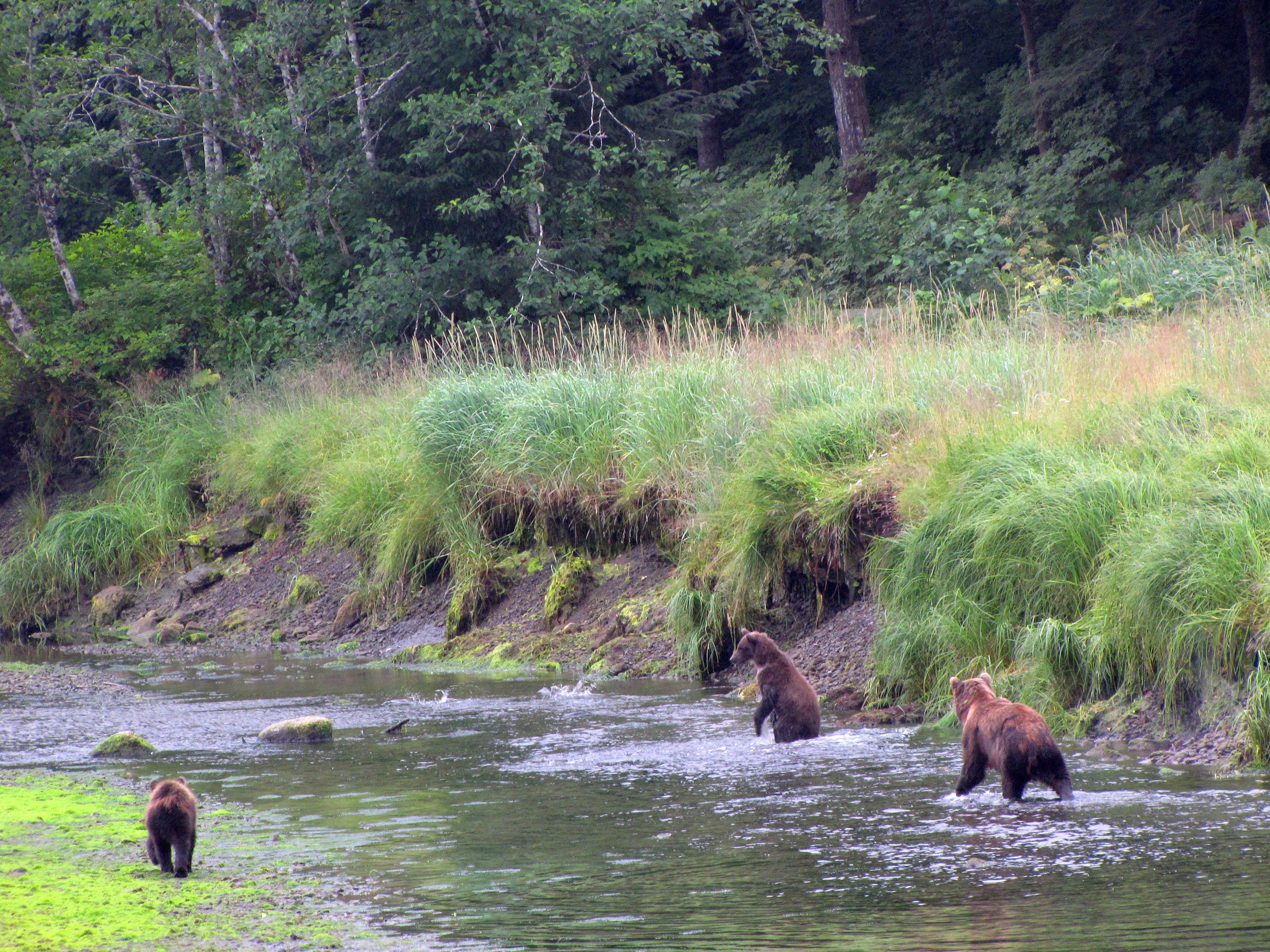Forest and Sea: The Salmon Connection
Text by Liz McKenzie and Photos by Richard Nelson
This tale begins not with the seiner’s net, brimming with thrashing salmon, and not with a bright red fillet on the dinner plate, although these are essential parts of the story.
It begins deep in the ocean where millions of salmon grow and feed, taking in ocean nutrients, such as nitrogen and phosphorus. When their sea time is up, salmon return to the place of their birth to give birth, and to give their lives to the next generation.
The bodies of spawned-out salmon fertilize the stream and help to provide food for insects and microorganisms, which then nourish the young salmon after hatching.
This story also begins with raucous crowds of seagulls gorging on salmon eggs; with cantankerous brown bears vying for position beside a stream filled with salmon; and it begins well upriver from the coast, in the forest fertilized by nutrients brought by salmon from the distant reaches of the sea
A family of brown bears fishing for pink salmon along a stream in the Tongass National Forest.
World Made of Salmon
When spawning salmon come up the rivers and streams, their bodies in one way or another feed an entire ecosystem—including brown bears, black bears, wolves, mink, marten, river otters, eagles, gulls, ravens, crows, shorebirds, small fish, caddis flies, and stone flies.
Partly eaten pink salmon carcass carried into the forest by a brown bear.
Bears and other mammals wander into the forest, and birds shelter in the trees, and they all leave nutrient-rich droppings as well as uneaten parts of salmon, which decay and fertilize the land. Next, the nutrients moulder into the soil, where they are taken into the roots of trees, shrubs, and other plants.
In a land of thin, relatively poor soils, these nutrient packets—brought from the ocean by salmon—are important to the life of the forest. Sitka spruce near salmon streams grow much faster than those on streams without salmon. Bears help to spread one of their own important foods, by carrying the seeds of berries they have eaten, and then depositing those seeds on the forest floor. Not only do the bear’s droppings deposit the berry seeds, but they simultaneously nourish the new seedlings that will grow into berry-producing bushes.
The Forest in the Sea
This is also a story of reciprocity, for the forest in turn provides the right conditions for millions of salmon eggs to hatch and for small salmon to grow, until they eventually migrate downstream into the ocean. Shade from the forest maintains the cool waters essential for both young salmon and returning adults to survive. When the great trees fall into streams, they create deep pools that are also vital habitat for each new generation of salmon.
Killer whales are among the many predators and scavengers that feed on salmon.
In this way, salmon help to create the forest. And the forest helps to create salmon—a brilliant and beautiful cycle that has continued for literally millions of years.
Salmon are also an important food source for ocean animals—beluga whales, killer whales, minke whales, humpback whales, harbor porpoises, salmon sharks, Steller sea lions, and harbor seals. Seabirds like puffins, murres, cormorants, and many others feed on young salmon.
The number of species who feed on salmon in Alaska is still being determined but scientists in Washington State have discovered that more than 130 animal species eat these fish. And of course humans are another species for whom salmon are an important food.
The story of salmon is one of connections and reciprocity—ocean, river, stream, and lake give salmon what they need to flourish in different parts of their life cycles and the salmon give back to each of the ecosystems that nourish them.
As long as we protect salmon and their habitats, this will be a story of renewability that goes on literally without end.
A Secret in the Forest
Take a surprising journey into the forest with host Richard Nelson.



